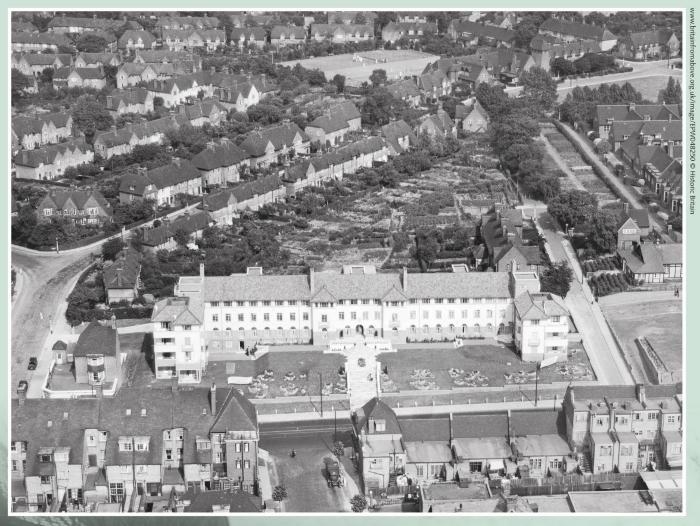To display in FULL SCREEN hover the cursor over the image above and click the top left zoom button
Building Hampstead Garden Suburb (1907-1939)
‘...Cannot worthy instead of unworthy houses be built there, and so disposed that trees, hedgerows and woodland places may remain, with birds to sing in them?’
Raymond Unwin, 1909
This exhibition looks at fifteen architects who worked at Hampstead Garden Suburb between 1907 and 1939. It aims to highlight their work in the Suburb and elsewhere as well as to place them and their buildings into a historical context.
Between them, these architects designed the majority of houses and flats on the Suburb and the great variety of their work was essential in making the Suburb what it is. For the buildings of the Suburb vary significantly in scale, style and treatment, yet are linked by two traits: the quality of their architecture and their respect for the townscape, or, for the principle that the individual building should not try to outshine its neighbours, but contribute to the appearance of the area as a whole. That so many Suburb buildings so effortlessly marry these traits is a testament to the talent of the architects who worked on the Suburb during this period when the majority of it was built.
Perhaps the major event of this period was the First World War, in which several of the architects featured fought. It changed the direction of the Suburb’s development significantly as the altered economic circumstances and shortage of labour after the war caused a shift away from building artisans cottages towards homes for the more affluent classes – not only larger detached houses, but also blocks of flats aimed at professionals. While some of these architects excelled in a particular architectural type, such as houses or flats, most distinguished themselves by their versatility. As this exhibition shows, these architects were often equally adept at designing town halls, pavilions, offices, halls, hospitals and cemeteries as they were domestic dwellings. They brought considered and beautiful architecture to the ordinary, everyday fabric of towns, cities and suburbs.
Much has already been written on the origins of the Hampstead Garden Suburb and on the major figures who helped to design and build one of the best examples of the Garden City Movement; on Henrietta Barnett, her determination to provide a better quality of housing for the working classes and her vision of a genuinely mixed community; on Edwin Lutyens and the designs for Central Square; and on Barry Parker and Raymond Unwin, their principles of town planning and the picturesque townscapes they laid out at Hampstead, Letchworth and elsewhere. However, this exhibition aims to celebrate the extraordinary work of those architects whose contribution to Hampstead Garden Suburb, while perhaps less well known today, is no less worthy of attention.
